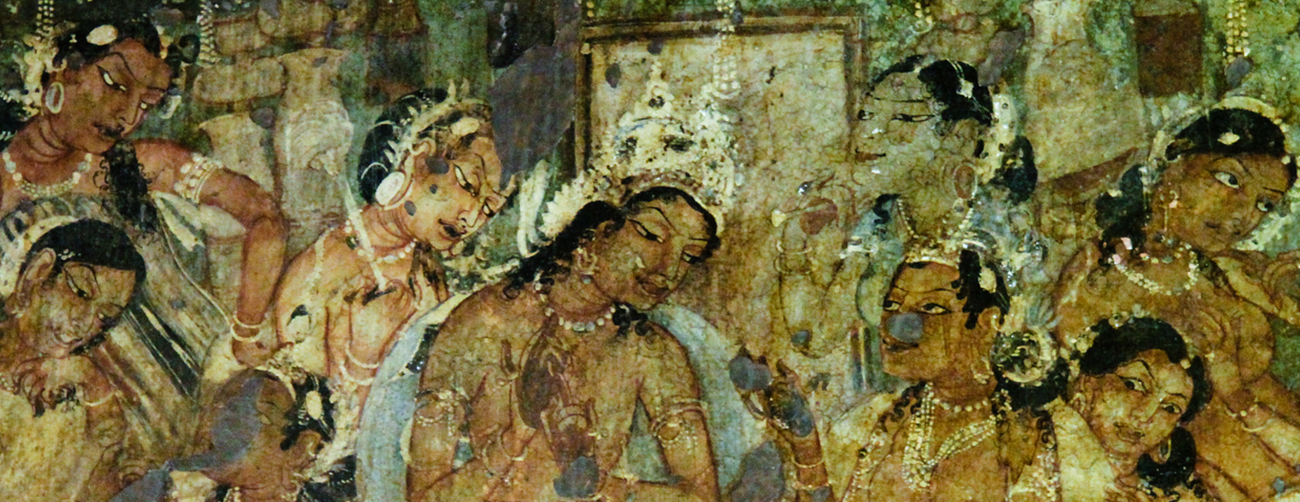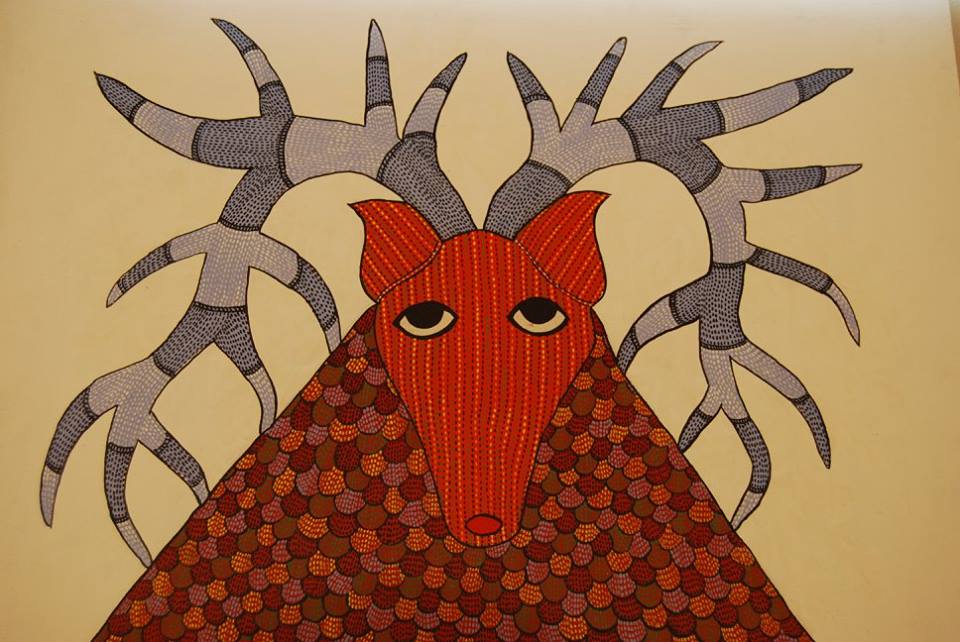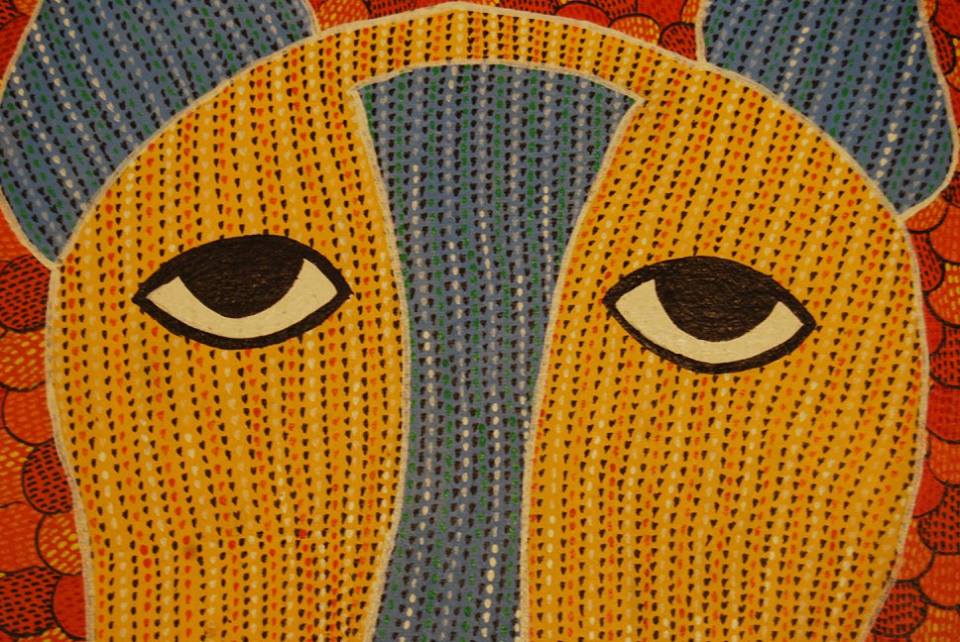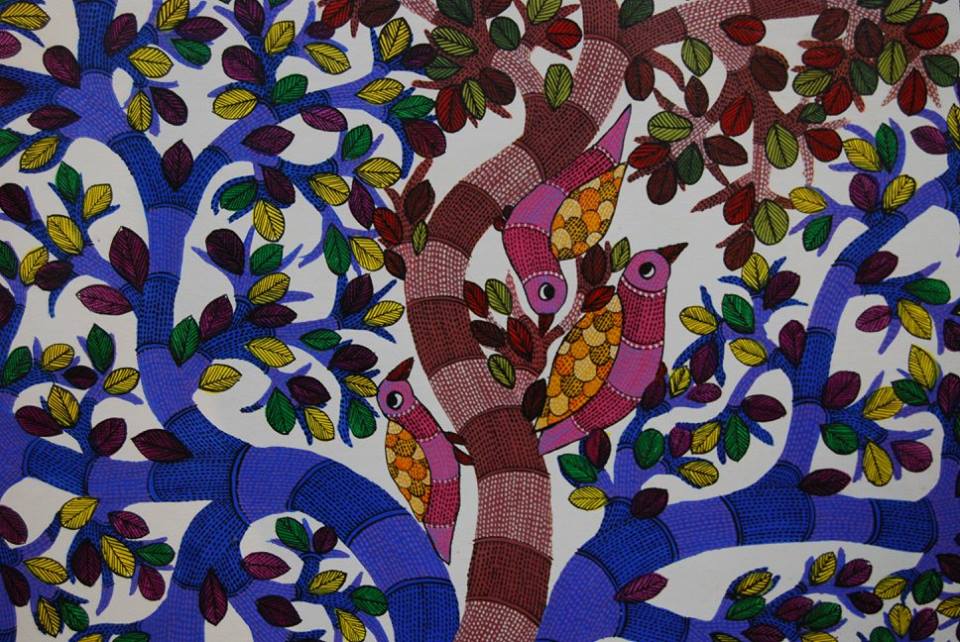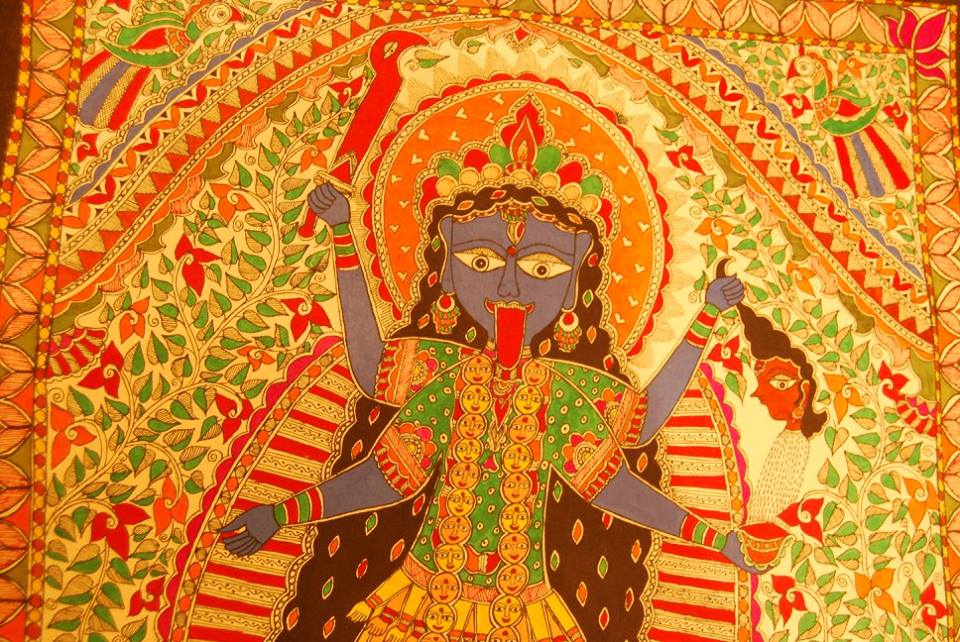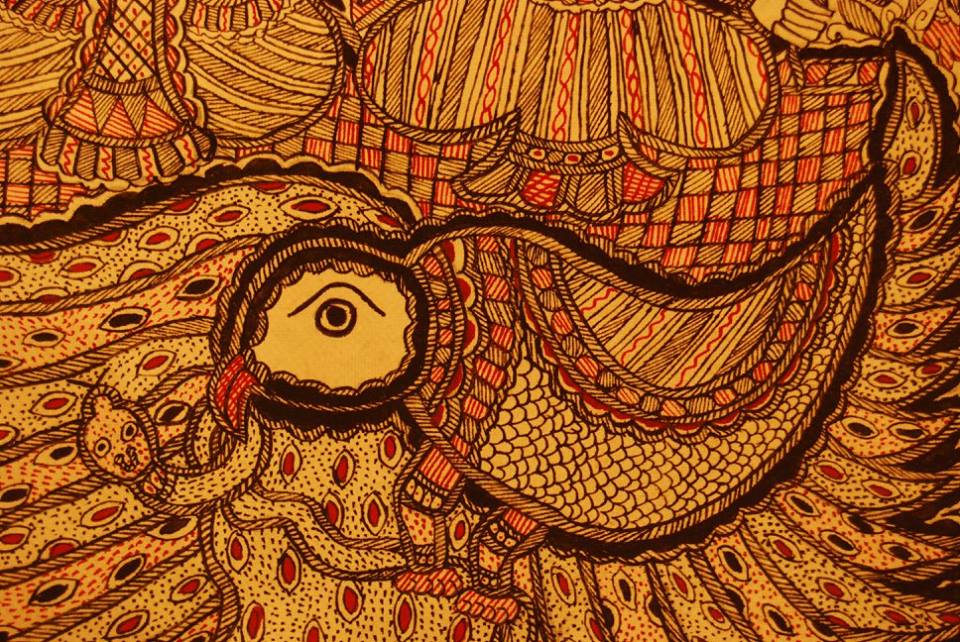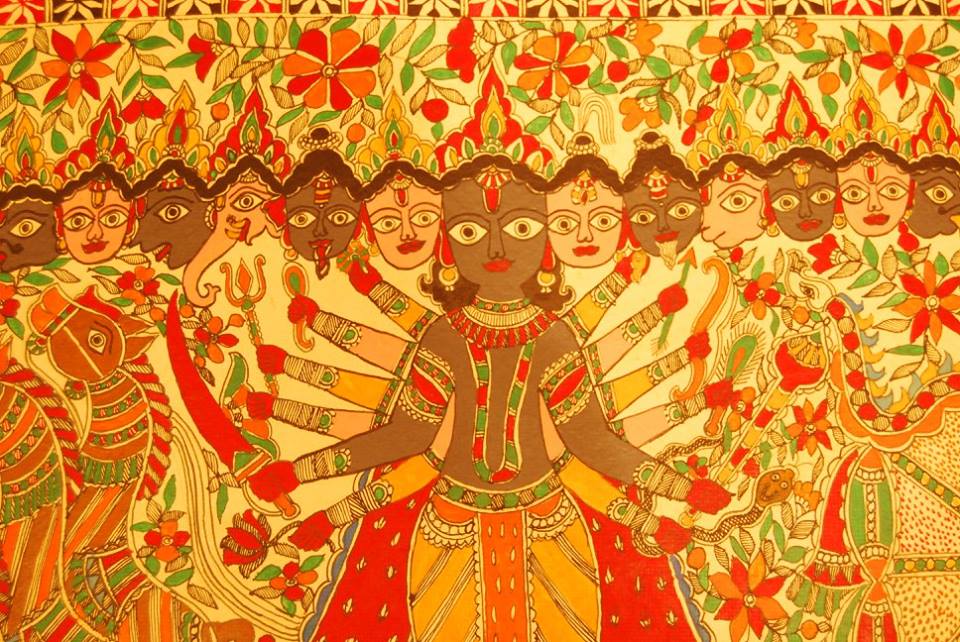Pic: Ajanta cave frescos
India is truly a land of many colors, everything ranging from clothes, jewelry and monuments are incomplete without colors. In ancient times, India was a very rich culture in the aspect of production and use of natural colors. In India natural pigments and dyes have been used to colour the fabrics and artworks. In India there are almost four hundred and fifty dye yielding plants. Even at a site as old as Mohenjo-Daro, a 5000 year old scrap of madder dyed cloth was excavated.
Natural Colors in Indian Cave Paintings
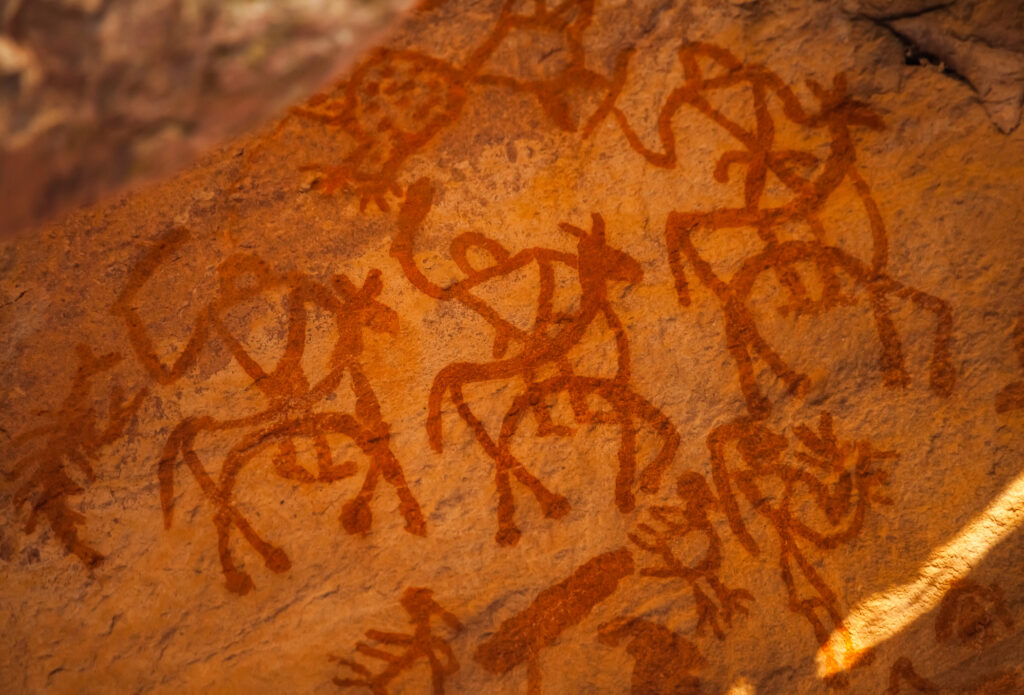
The main colours used in the Ajanta cave frescos of 2nd Century BCE were red ochre, yellow ochre, brown ochre, lamp black, white and lapis lazuli which was imported from Northern India, central Asia and Persia. The green was made by mixing this lapis lazuli with Indian yellow ochre.
In the pre-historic cave paintings of Bhimbetka natural red and white pigments are common colors used in these paintings. Green and yellow colours are also used. The colors are a combination of manganese, hematite, wooden coal and soft red stone.
These cave paintings are made with natural colors that has survived through time and weather. The colors were obtained from lime stones, iron ore, burnt bones, blood, vegetable juices mixed with animal fat or spit that helped for the color to retain on the rocks.
Pic: cave paintings of Bhimbetka
Types of Natural Pigments
Most tribal and folk paintings make use of mineral, earth and organic colours.
- Mineral pigments are made from mineral rocks and stones ‘extracted’ from the earth, some of which are semi-precious stones, for example malachite, lapis lazuli, and ultramarine.
- Some pigments are made from earth surface deposits, for example ramraj-yellow ochre and geru-red ochre.
- Organic pigments are made from plant, animal or insect, known as lae or dye colours, for example red lac is derived from an insect; and neel, indigo, from a plant.
Traditions of using Natural Colours in Folk Paintings
The rich cultural diversity of India is reflected in the folk art and crafts. The folk arts of India are very simple, and yet vibrant enough to speak volumes about the country’s rich heritage.
Various painting styles are prevalent across various regions, each representing tradition and customs passed on from one generation to other. Traditionally, most of the Indian painting styles existed as wall paintings or murals. In due course of time, urbanization brought these painting forms on paper, canvas, and cloth etc. The themes were curtailed so as to fit into the smaller canvas.
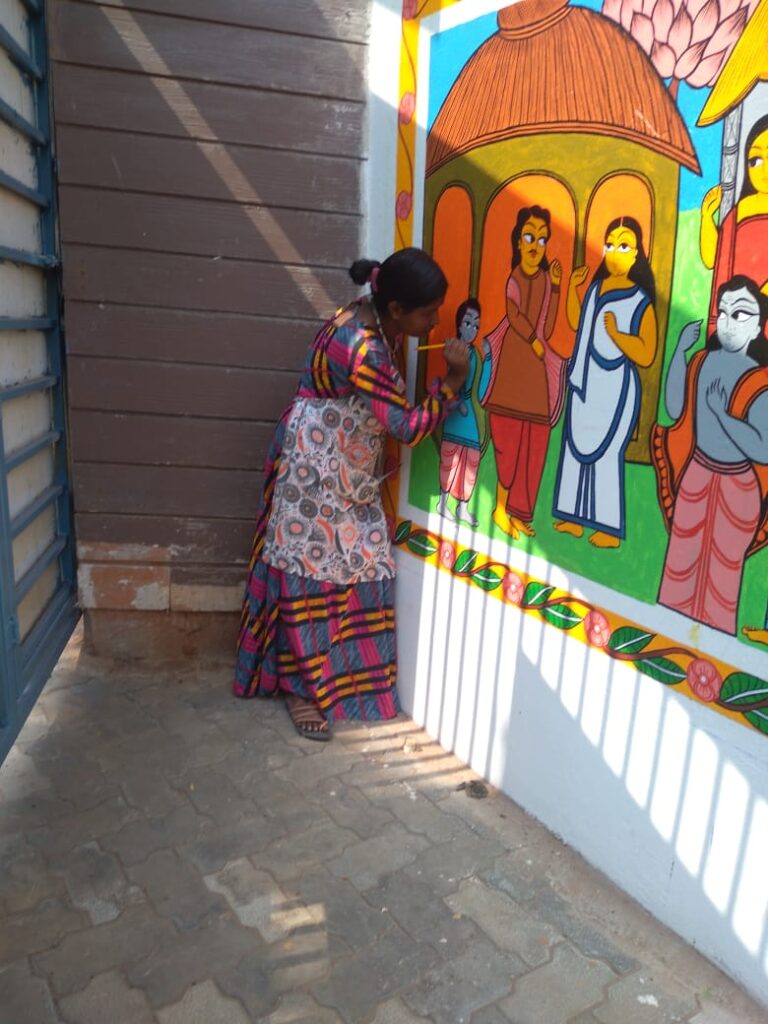
Wall painting 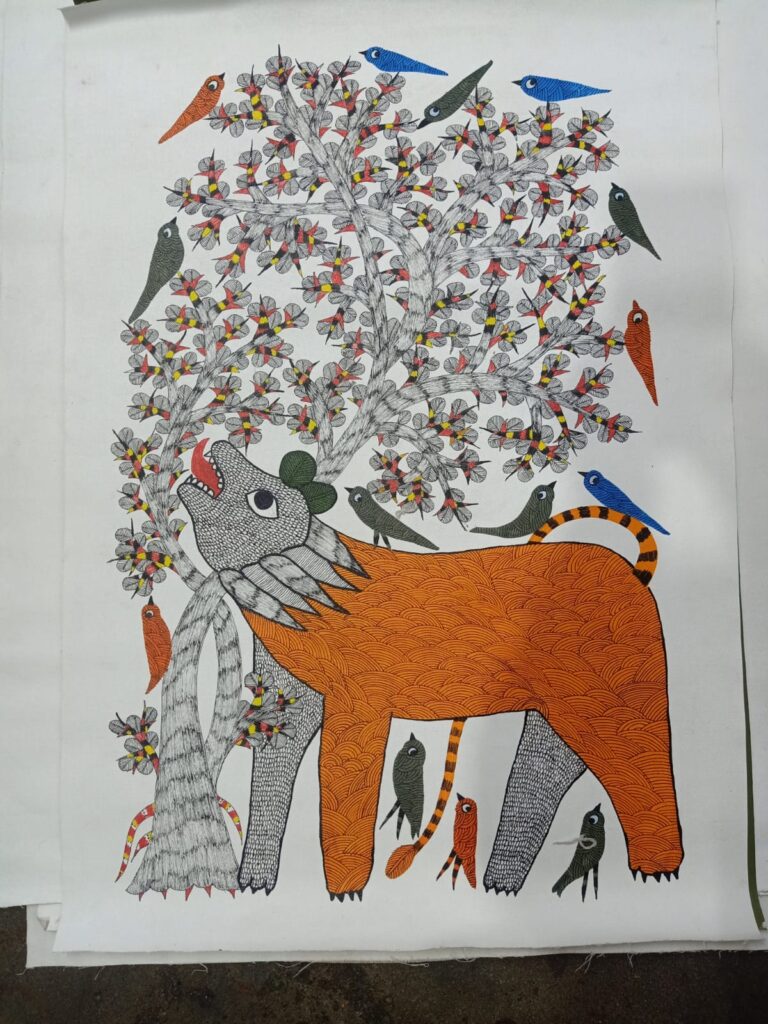
Folk painting on paper canvas 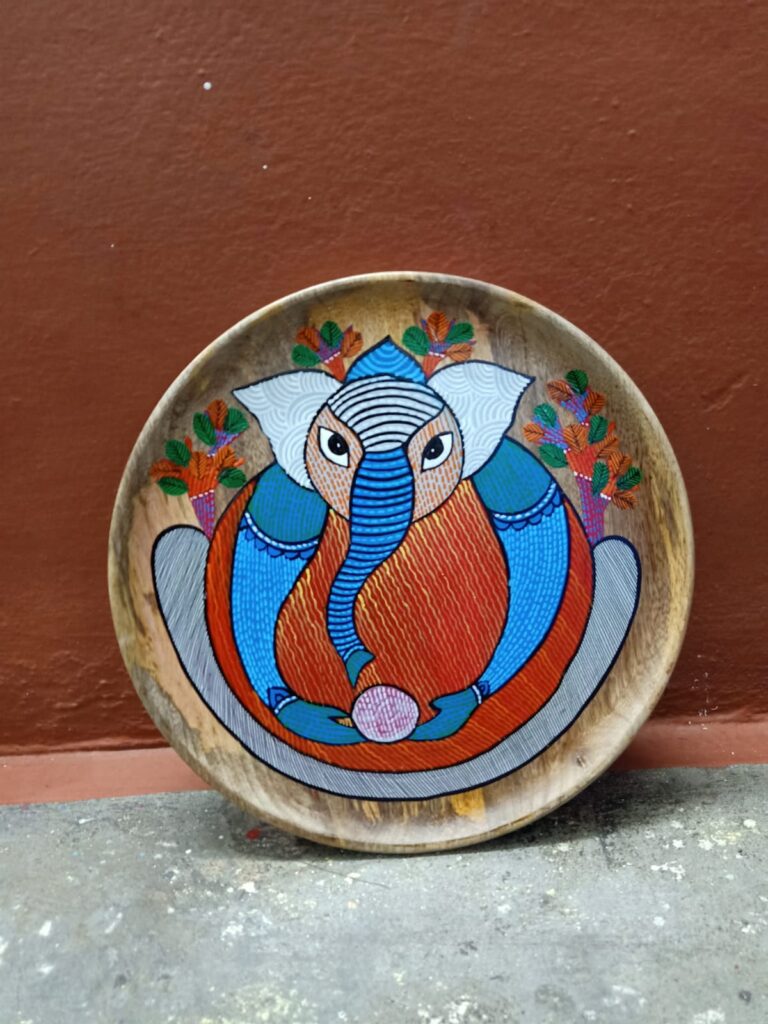
Folk art painted wall plate
Preparing the paints is perhaps the most important part of the creation of folk paintings, engaging the craftsmanship of the artists in using naturally available raw materials to bring about indigenous paints.
Phad Painting of Rajsthan
In Phad art of Rajasthan a majority of the colours used in this painting are of mineral origin. The colours are prepared with powdered minerals and semi-precious stones mixed with tree gum (Babul tree) – kheriya gond (indigenous glue) as a binding medium. This tree gum gives a dazzling brilliance and permanency to the painting. Black is obtained from lamp-black, yellow from Haritali stone, red from Hingol stone, white from boiled and filtered powdered conch shell. Powdered earthen colours, water, gum and indigo are also used. The colours are prepared by the women artisans while the process of starching the scroll and kheriya gond (indigenous glue) and ghotana (burnishing) is done by men.
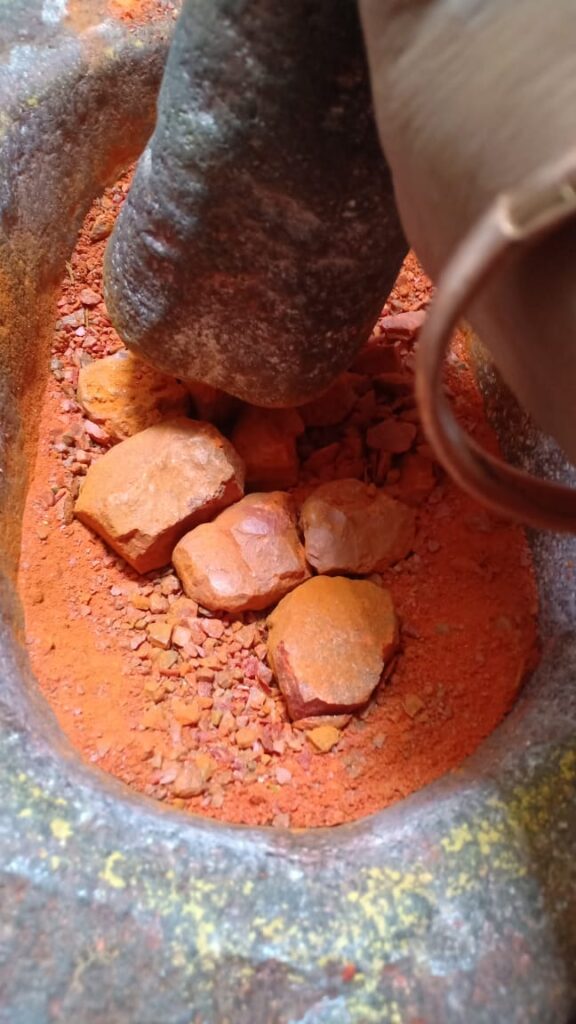
Orange colour is made by mixing red oxide (sindur) with yellow Orpiment. 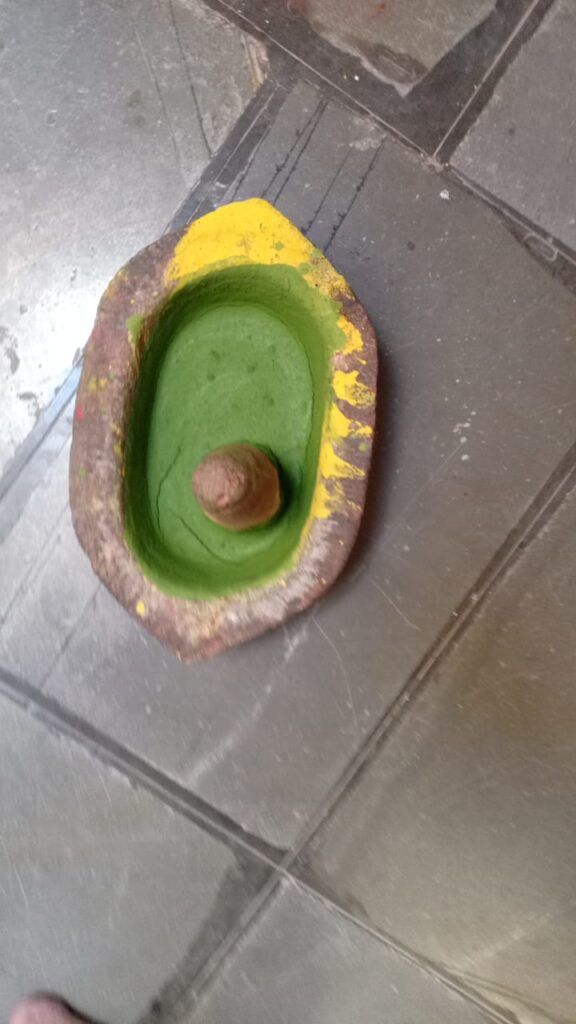
Green colour is made by mixing Indigo and yellow Orpiment. 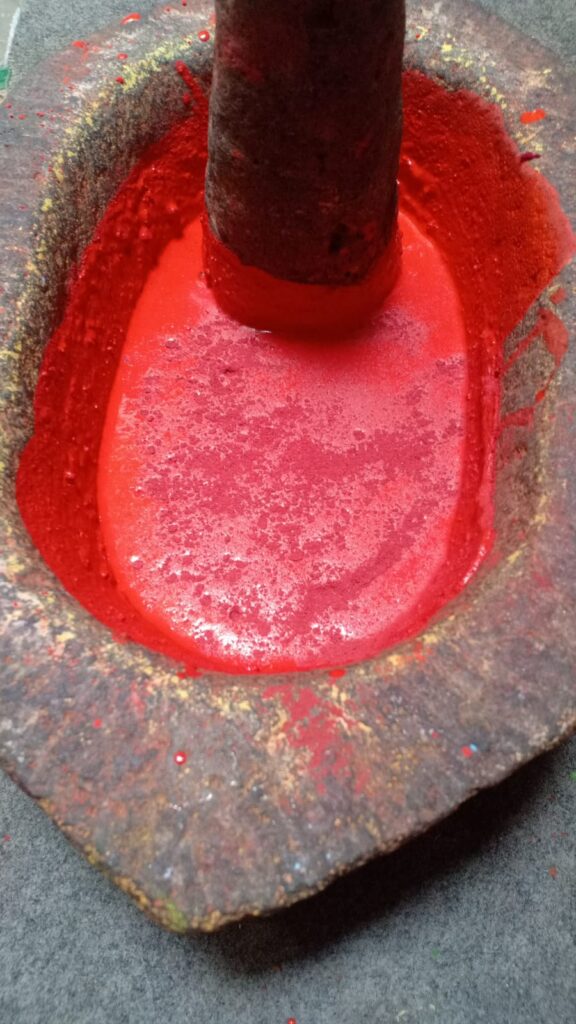
Red colour produced by pulverizing chunks of cinnabar (mercury sulfide). Sometimes it is mixed with red oxide (sindur).
Bengal Patachitra & Santhal Painting of West Bengal
Traditionally the Patuas of West Bengal make effective use of eco-friendly colours by collecting them from leaves, fruits, flowers, plants, trees and other natural elements. For instance, they extract red from Annatto fruit, saffron from Lotkon leaves, blue from Aparajita flowers (Neelkanth flower), brown from Segun tree, yellow from turmeric, black from lamp black or charcoal, green from Ivy gourd (also from Babal tree), white from Kusum Mati etc. The colours are blended with natural gum of wood apple to provide the glaze or coherence to the base.
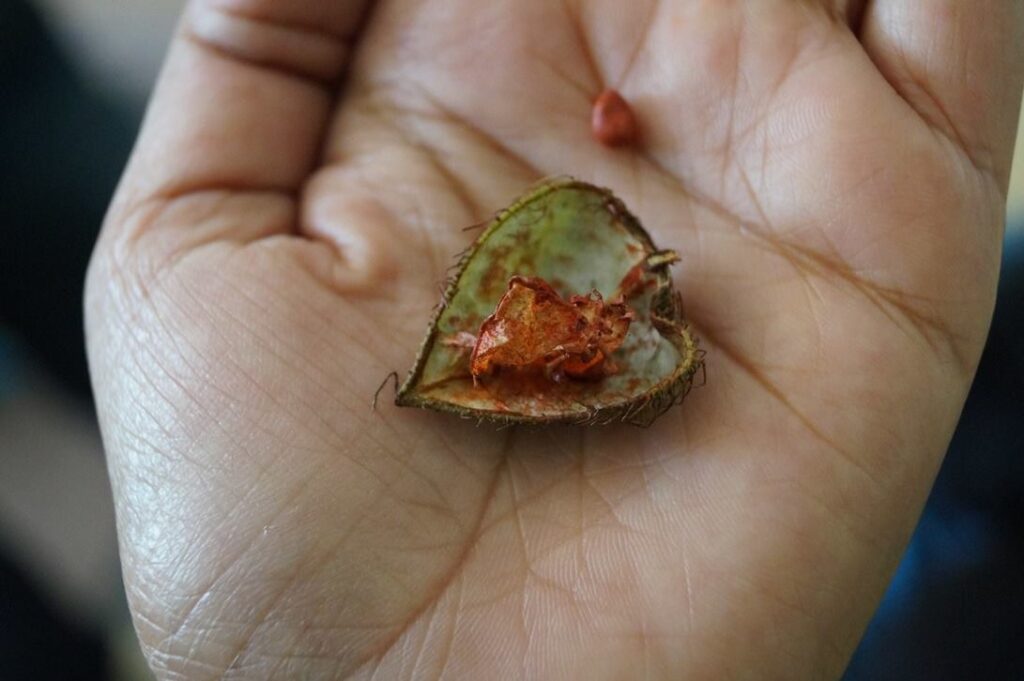
Red obtained from Annatto fruit 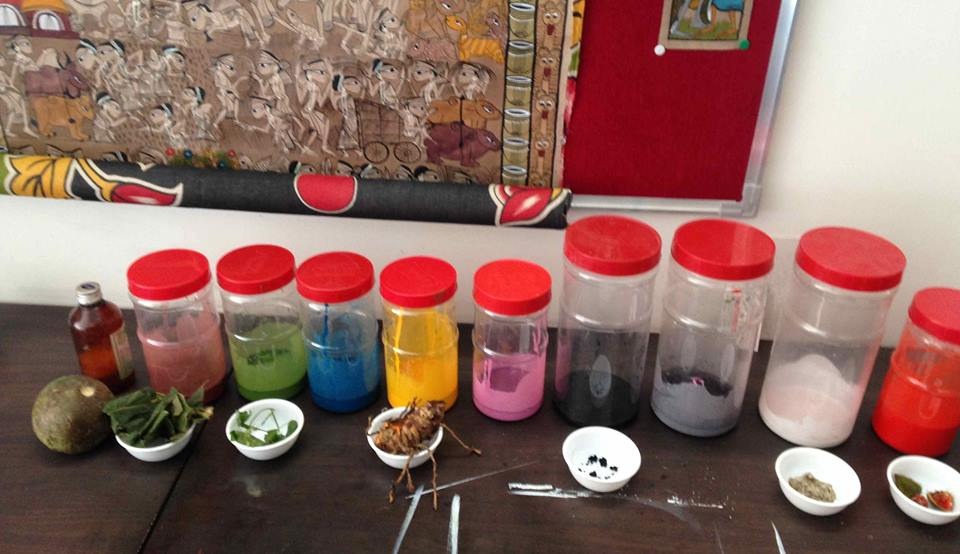
Sources for Bengal Patachitra colours 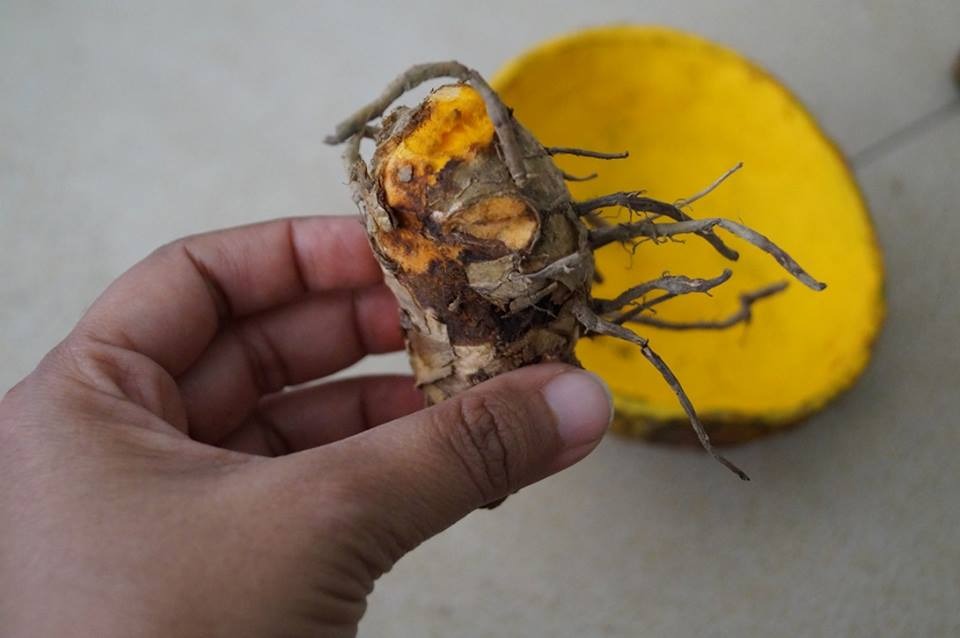
Turmeric for obtaining yellow colour
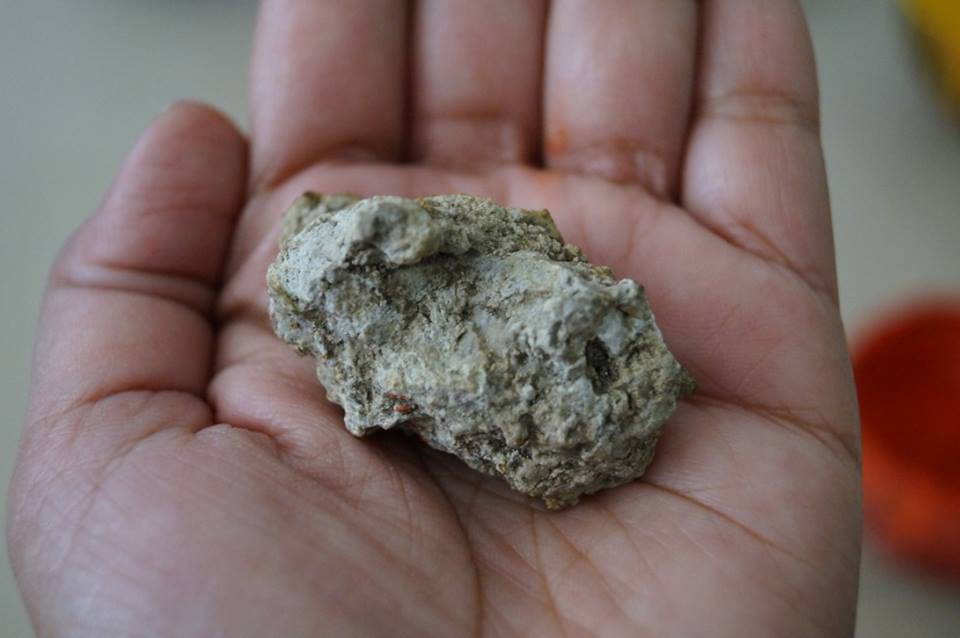
Kusum Mati 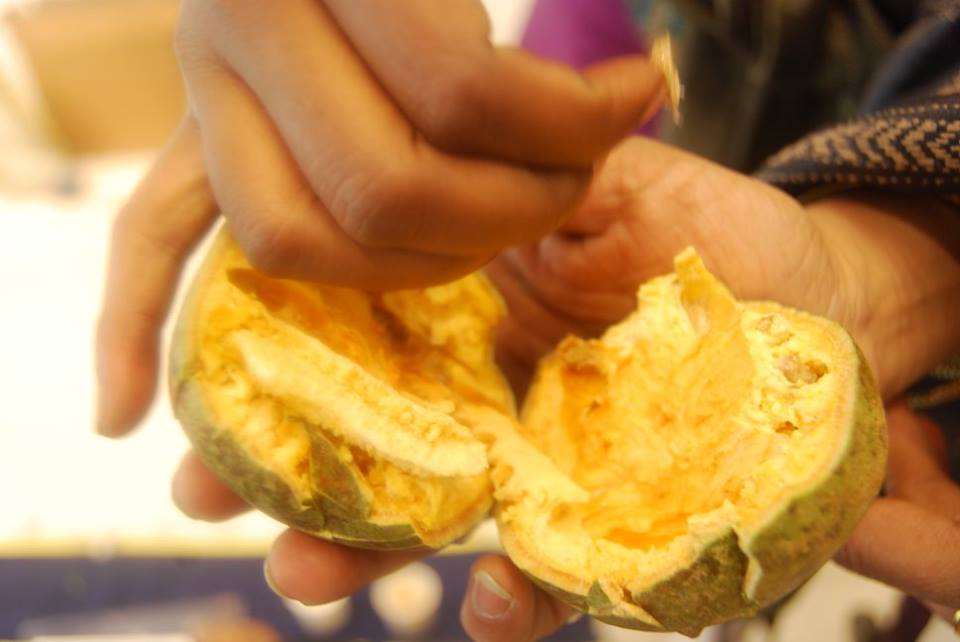
Gum from wood apple to provide the glaze 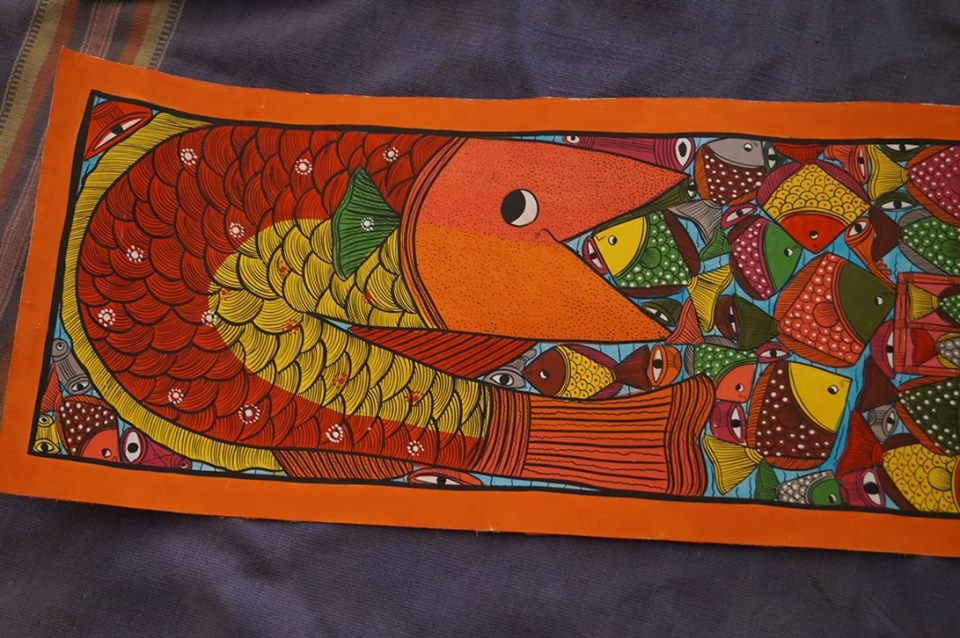
Bengal Patachitra painting
Pattachitra Art of Odisha
For preparing Odisha Pattachitra artists of Odisha use a range of raw materials like vegetables, stones and minerals. In Odisha Pattachitra the gum of the kaitha (wood apple) tree is the chief ingredient, and is used as a base for making different pigments, on which diverse raw materials are mixed for diverse colours. All these colours are mixed in dried coconut shells. Powdered conch shells, for instance, are used for making a white pigment, while lamp soot is used for a black pigment. Hingulal stone from the hills in Odisha is used to make red colour. Geru stone gives us gerua colour. Yellow is derived from yellow stone called hartal.
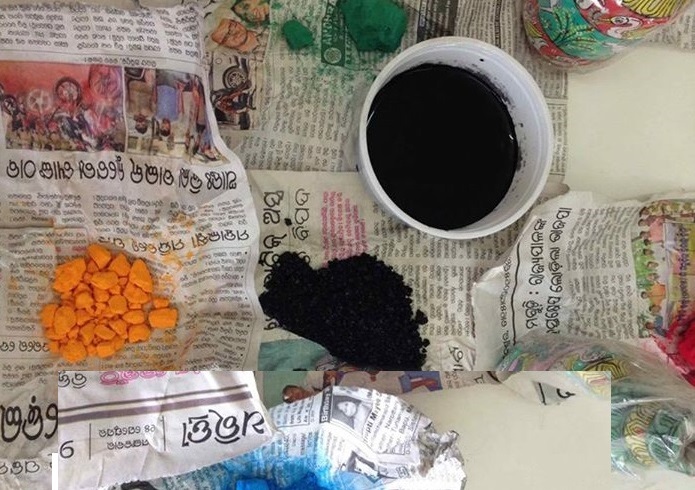
Minerals are ground to provide pigments. 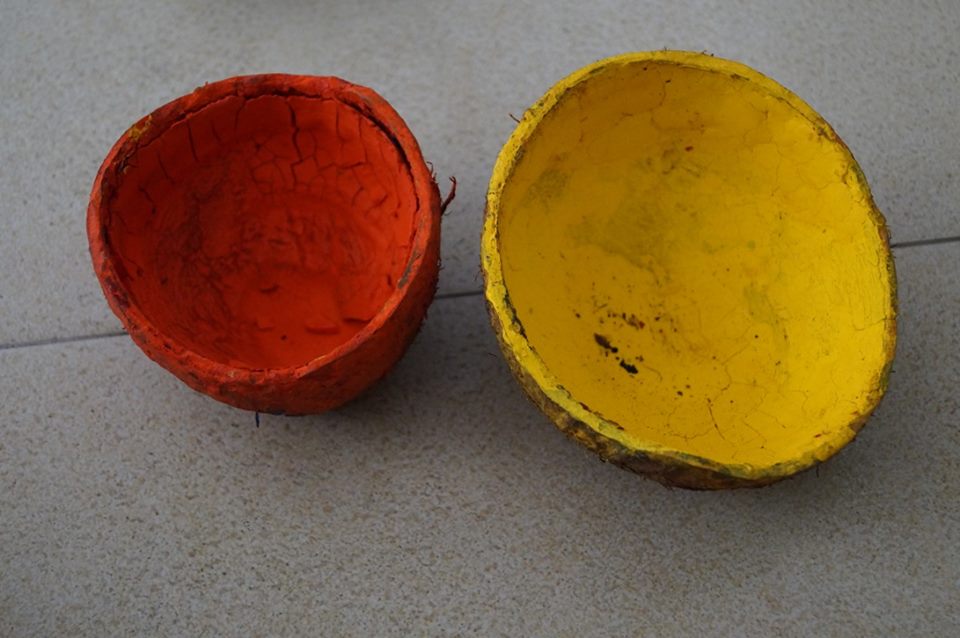
Coconut shells as natural storage palette for colors 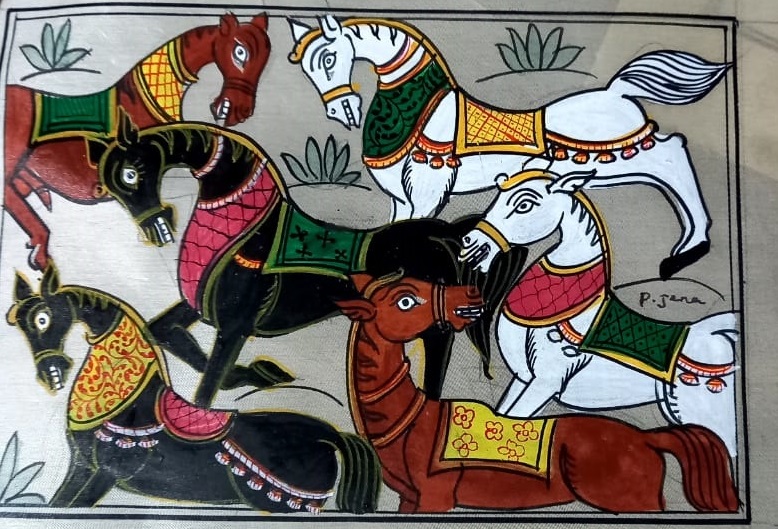
Pattachitra on silk canvas
Gond Painting of Madhya Pradesh
Colours used for Gond painting by Gond tribe (among the largest tribes in Central India) on walls and floor are made from different kinds of soils and other organic things available in the village. For example, Gonds use wood coal for black, chhui soil or lime is used for white, red comes from a red coloured soil called geru, yellow is from with an ochre clay called ramraj soil or pili mitti (available around the Narmada river), sem leaves for dark green and for light green cow dung is used. Certain colours have special significance and are used to depict specific emotions and elements. Fine dots, lines and dashes are used to create the images in Gond art. The minute infilling of the motifs is a significant characteristic of Gond art. Each artist evolves his signature infilling pattern.
Madhubani Painting of Bihar
The Madhubani artists of Bihar make colours from plant extracts; for example, white from rice powder, yellow is prepared from turmeric, lamp soot is used for a black pigment, orange from the Palasa flower, red from Kusum flowers or red sandalwood, blue from indigo, and green from the wood apple leaf. These juices are mixed with resin from banana leaves and ordinary gum to enable it to stick to the painting medium. Some colours are mixed with a paste of cow dung to have a better texture.
We are proud to bring back the tradition of these Natural Watercolor Paints – for you and the earth! If you are interested in natural sustainable water color paints check out our natural coloring kit HERE. Brought to you in a Heirloom Kit – to take care and preserve, as we help preserve the earth and its environment for future generations – just like our ancestors!
You can also check our folk paintings collection HERE .
Source:
1. Living Traditions Tribal and Folk Paintings of India by Centre for Cultural Resources and Training (CCRT). Retrieved from Living Traditions Tribal and Folk Paintings of India : Free Download, Borrow, and Streaming : Internet Archive.


